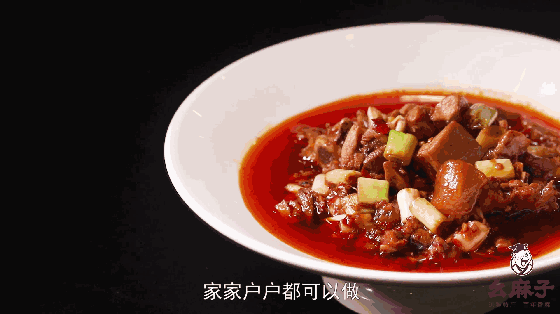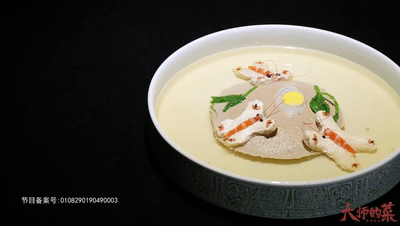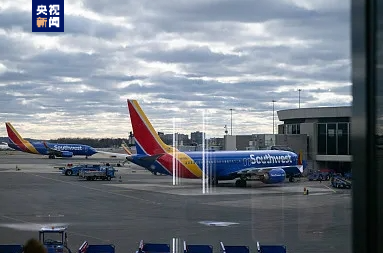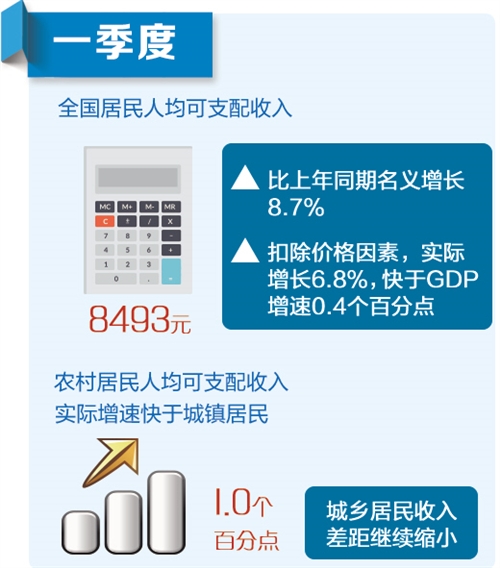Inner Mongolia is located in the northern frontier of the motherland, extending obliquely from northeast to southwest in a long and narrow shape, with a length of about 2,400 kilometers from east to west and a maximum span of more than 1,700 kilometers from north to south. The total area is 1.183 million square kilometers. It spans the Northeast, North China and Northwest China, borders Heilongjiang, Jilin, Liaoning, Hebei, Shanxi, Shaanxi, Ningxia and Gansu provinces, and borders Russia and Mongolia with a border line of more than 4,200 kilometers. The landform is dominated by plateaus, with most areas above 1000 meters above sea level. In the east, there are vast forests in Daxinganling Mountains, in the south, there are rich Nenjiang Plain, Xiliaohe Plain and Hetao Plain, in the west, there are vast Tengger, Badain Jaran, Wulanbuhe Desert, and in the north, there are vast Hulunbeier and Xilingol grasslands. The climate belongs to temperate continental monsoon climate, with the temperature around 25℃ in summer, the lowest temperature in the central and western regions below -20℃ in winter, and the lowest temperature in the eastern forest region below -50℃.
Capital of the autonomous region: Hohhot
Address of Autonomous Region Government: No.1 Chilechuan Street, Hohhot
Postal code: 010098
Tel: 0471-6944404
Website: www.nmg.gov.cn
Geographical location and natural conditions
Geomorphology The whole area is basically a plateau landform area, with most areas above 1000 meters above sea level. Inner Mongolia Plateau is the second largest of the four plateaus in China. Besides the plateau, there are mountains, hills, plains, deserts, rivers and lakes.
climateIn 2023, the average temperature in the whole region was 0.9℃ higher than normal (1991-2020, the same below), which was the first highest in the same period since 1961 with 2007. The average temperature in the whole region is high in spring, summer and autumn, and normal in winter (December 2022-February 2023, the same below). The average precipitation in the whole region is 4.9%(16.0mm) less than normal, with more in the east and northeast, less in most parts of the west, and the rest areas are close to normal. The precipitation in the four seasons is more than 9.7% in winter, and less in spring, summer and autumn, with the most less in autumn, less than 16.8%. ?
natural resource
????Wild animal resources:
Terrestrial wild vertebrates in the whole region613 species, belonging to 29 orders, 93 families and 291 genera. Among them, there are 50 species of terrestrial wild animals under national first-class protection; There are 106 species of terrestrial wild animals under national second-class protection.
Wild plant resources:
There are 2619 species of vascular plants (seed plants and ferns) in Inner Mongolia. Among them, there are 2551 species of seed plants and 68 species of ferns. Among them, there are 2 species of national first-class protected plants, including 1 species in charge of forestry and grass department and 1 species in charge of agriculture department; There are 45 kinds of national second-class protection, including 21 kinds in charge of forestry and grass departments and 24 kinds in charge of agriculture departments.
Forest resources:Inner Mongolia is an important ecological security barrier in the north of China and one of the provinces with relatively rich forest resources in China. From east to west, there are 11 primary forest areas and 11 secondary forest areas in Daxing ‘anling (southern mountains of Daxing ‘anling, Bogeda Mountain, Diyan Temple, Hanshan Mountain, Keshiketeng, Maojingba, Daqingshan Mountain, Manhanshan Mountain, Wulashan Mountain, Helan Mountain and Ejina Secondary Forest Area), as well as artificial forest areas formed by long-term construction. According to the updated results of "one map" of forest resources management in 2020, the forest area in the whole region is 408 million mu, ranking first in the country, with a forest coverage rate of 23.0%; The plantation area is 99 million mu, ranking third in the country; The forest accumulated 1.6 billion cubic meters, ranking fifth in the country. Natural forests are mainly distributed in 11 secondary forest areas, such as the original forest area in Daxinganling, Inner Mongolia and the mountains in the south of Daxinganling, and artificial forests are distributed all over the region. The region is rich in arbor and shrub species, including poplar, willow, elm, Pinus sylvestris var. mongolica, Pinus tabulaeformis, larch, birch and oak, and shrubs such as Caragana, Nitraria sibirica, Prunus armeniaca, Salix psammophila, Haloxylon ammodendron, Poplar and Hippophae rhamnoides.
Water resources: There are more than a thousand rivers in Inner Mongolia, among whichThere are 107 rivers with a basin area of more than 1000 square kilometers; There are 258 river basins with an area of more than 300 square kilometers.There are nearly a thousand lakes of different sizes.The average total water resources in the whole region for many years is 51.57 billion cubic meters, of which the surface water resources are 36.999 billion cubic meters and the groundwater resources are 21.784 billion cubic meters.The annual average available water resources in the whole region is 25.342 billion cubic meters, of which the available surface water resources are 14.012 billion cubic meters and the exploitable groundwater is 10.562 billion cubic meters.
Wetland resources:
According to the results of the main data bulletin of the third national land survey in the autonomous region, the wetland area in the whole region is 3,809,400 hectares, including five secondary land types, including: 701,700 hectares of forest swamp, accounting for 18.42%; Shrub swamp is 214,800 hectares, accounting for 5.64%; 1,836,600 hectares of swamp grassland, accounting for 48.21%; 938,100 hectares of inland beaches, accounting for 24.63%; There are 118,200 hectares of marshland, accounting for 3.10%. Wetlands are mainly distributed in Hulunbeier and Xilin Gol League, accounting for 86% of the wetlands in the whole region.
Nature reserve:
There are 380 nature reserves, including scenic spots, geological parks, wetland parks, forest parks and desert park, with a total area of 15,718,100 hectares, accounting for 13.29% of the territory of the autonomous region. Among them, there are 216 nature reserves with a total area of 12,946,600 hectares. Among them, there are 29 national-level ones, covering an area of 4.2612 million hectares; There are 64 autonomous regions, covering an area of 6.9653 million hectares; There are 123 below the autonomous region level, covering an area of 1,720,100 hectares. There are 5 scenic spots with a total area of 527,400 hectares. Among them, there are 2 national-level ones, covering an area of 152,000 hectares; There are 3 autonomous regions, covering an area of 375,400 hectares. There are 23 geological parks with a total area of 485,600 hectares. Among them, 3 are world-class with an area of 277,700 hectares; There are 11 national-level ones, covering an area of 129,000 hectares; There are 9 autonomous regions, covering an area of 78,900 hectares. There are 63 wetland parks with a total area of 386,100 hectares. Among them, 53 are national, covering an area of 346,200 hectares; There are 10 autonomous regions, covering an area of 39,900 hectares. There are 58 forest parks with a total area of 1,325,800 hectares. Among them, 36 are national, covering an area of 1,095,700 hectares; There are 21 autonomous regions, covering an area of 226,700 hectares; There is one below the autonomous region level, with an area of 0.34 million hectares. There are 15 national desert park with a total area of 46,600 hectares.
Mineral resources:
Inner Mongolia has a vast territory, superior metallogenic geological conditions and rich mineral resources. The midwest is rich in copper, lead, zinc, iron, rare earth and other minerals; The south-central region is rich in gold deposits; The eastern part is rich in silver, lead, zinc, copper, tin and rare metal elements; Energy and mineral resources are distributed in 12 cities, but mainly concentrated in Ordos basin, Erlian basin and Hailaer basin group.
By the end of 2022, there were 139 species (including subspecies) of minerals with identified resource reserves in the whole region, and 131 species were listed in the Table of Mineral Resources Reserves of Inner Mongolia Autonomous Region. There are 109 kinds of minerals in the whole region that rank in the top ten in China, among which 52 kinds of minerals rank in the top three, and 21 kinds of minerals such as coal, lead, zinc, silver and rare earth rank first in China. (The data of 2023 will be released after statistics at the end of 2024).
tourist resources
????2023In the whole year, it received 230.45 million domestic tourists and realized domestic tourism income of 335.47 billion yuan. The 457 A-level scenic spots in the whole region received 92.232 million tourists, with an operating income of 6 billion yuan.
environmental protection
According to preliminary statistics, in 2023, the afforestation area was 511,000 hectares. Among them, there are 134,000 hectares of artificial afforestation, 11,000 hectares of aerial seeding afforestation, 20,000 hectares of closing hillsides to facilitate afforestation, 152,000 hectares of degraded forest restoration, and 193,000 hectares of middle and young forest tending (operation). At the end of the year, the forest area of the whole region was 23.82 million hectares, and the forest coverage rate was 20.79%.
In 2023, there were 216 nature reserves in the whole region. Among them, there are 29 national nature reserves and 64 autonomous regional nature reserves. The nature reserve covers an area of 12.947 million hectares. Among them, the national nature reserve covers an area of 4.261 million hectares.
Demographic situation
????By the end of 2023, the resident population of the whole region was 23.96 million. Among them, the urban population is 16.671 million and the rural population is 7.289 million. The urbanization rate of permanent residents was 69.58%, an increase of 0.98 percentage points over the end of last year. The male population is 12.271 million and the female population is 11.689 million. The annual birth population was 120,000, with a birth rate of 5.00 ‰; The death toll was 202,000, with a mortality rate of 8.42‰.
Science and education situation
Among the scientific and technological projects in 2023, 26 major scientific and technological special projects were newly established, 855 were arranged by the Natural Science Foundation, and 582 were arranged by key R&D and achievement transformation plans. The total scale of special funds for the transformation of scientific and technological achievements is 520 million yuan. There are 53 science and technology business incubators and 177 creative spaces. The number of patents granted in 2001 was 22,249, a decrease of 9.7% over the previous year. There are 5.2 invention patents per 10,000 population. In the whole year, 2219 technical contracts were registered in the whole region. Among them, 1817 technical contracts were registered in the region, an increase of 39.3%. The turnover of technology contracts in the whole region was 6.17 billion yuan. Among them, the turnover of technology contracts in the region was 5.63 billion yuan, an increase of 19.3%.
byBy the end of 2023, there were 12 postgraduate training units in the whole region, with 14,000 students enrolled (including part-time) and 40,000 graduate students (including part-time), an increase of 6.6% over the previous year. There are 54 colleges and universities with 164,000 students, 540,000 students and 151,000 graduates. There are 170 secondary vocational education schools with 65,000 students, 187,000 students and 58,000 graduates. There are 318 ordinary high schools with 146,000 students, 428,000 students and 143,000 graduates. There are 715 junior high schools with 215,000 students, 663,000 students and 221,000 graduates. There are 1,635 primary schools with 240,000 students, 1.408 million students and 215,000 graduates. There are 554,000 children in kindergartens. The consolidation rate of nine-year compulsory education is 98.8%, and the gross enrollment rate in senior high school is 93.5%.
Tsukiji
Gross domestic product (GDP)
????According to preliminary accounting, the regional GDP in 2023 was 2,462.7 billion yuan, an increase of 7.3% over the previous year. Among them, the added value of the primary industry was 273.7 billion yuan, an increase of 5.5% over the previous year; The added value of the secondary industry was 1,170.4 billion yuan, an increase of 8.1%; The added value of tertiary industry was 1,018.6 billion yuan, up by 7.0%. The proportion of the three industries is 11.1:47.5:41.4. The contribution rates of primary, secondary and tertiary industries to the regional GDP growth are 8.7%, 45.7% and 45.6% respectively. Per capita GDP reached 102,677 yuan, an increase of 7.4% over the previous year.
????financial condition
????In 2023, the general public budget revenue of the whole region was 308.34 billion yuan, an increase of 9.2% over the previous year. Among them, the tax revenue was 233.10 billion yuan, an increase of 9.2%, accounting for 75.6% of the general public budget revenue. General public budget expenditure was 681.75 billion yuan, an increase of 15.8%.
????Industrial economy:
In 2023, the total industrial added value increased by 7.2% over the previous year. Among them, the added value of industrial enterprises above designated size increased by 7.4%. In industries above designated size, the added value of state-owned holding enterprises increased by 8.0%, joint-stock enterprises increased by 7.2%, and foreign-invested enterprises from Hong Kong, Macao and Taiwan increased by 17.7%. In terms of categories, the mining industry increased by 2.1%, the manufacturing industry increased by 11.7%, and the electricity, heat, gas and water production and supply industries increased by 16.3%.
In 2023, among the industries above designated size, the coal mining and washing industry increased by 1.4%, the food manufacturing industry increased by 18.3%, the oil, coal and other fuel processing industry increased by 15.3%, the chemical raw materials and chemical products manufacturing industry increased by 2.5%, the non-metallic mineral products industry increased by 20.2%, the non-ferrous metal smelting and rolling processing industry increased by 11.9%, the special equipment manufacturing industry increased by 13.1%, and the electrical machinery and equipment manufacturing industry increased by 13.1%.
In 2023, the annual output of raw coal was 1,233.663 million tons, an increase of 1.7% over the previous year; The power generation was 762.99 billion kWh, up by 15.3%. Among the products of industrial enterprises above designated size, the coke output was 50.693 million tons, an increase of 8.0%; The output of monocrystalline silicon was 589,000 tons, an increase of 42.3%; The steel output was 33.858 million tons, an increase of 11.1%; The output of primary aluminum was 6.338 million tons, an increase of 3.7%; The output of dairy products was 4.73 million tons, up by 13.2%.
In 2023, industrial enterprises above designated size realized operating income of 2,846.60 billion yuan, down 0.7% from the previous year. The cost per 100 yuan of operating income is 6.9 yuan, an increase of 0.3 yuan over the previous year; The cost per 100 yuan of operating income is 79.5 yuan, increasing 2.9 yuan. At the end of the year, the asset-liability ratio of industrial enterprises above designated size was 56.6%, an increase of 0.7 percentage points over the end of the previous year. The annual sales rate of industrial enterprises above designated size was 98.8%.
byBy the end of 2023, the installed capacity of power generation equipment in power plants with 6000 kilowatts and above in the whole region was 214.321 million kilowatts, an increase of 26.0% over the end of last year. among[12]The installed capacity of thermal power was 118.205 million kilowatts, an increase of 10.5%; The installed capacity of hydropower was 2.381 million kilowatts, the same as that of the previous year; The installed capacity of wind power was 69.54 million kilowatts, an increase of 52.4%; The installed capacity of solar power generation was 21.903 million kilowatts, an increase of 48.2%.
In 2023, the added value of the construction industry increased by 12.1% over the previous year. At the end of the year, there were 1335 general contracting and professional contracting construction enterprises with qualification grades in the whole region, an increase of 96 over the end of last year. The construction area of enterprise housing with workload was 66.679 million square meters, down 5.4% from the previous year; The completed housing area was 12.716 million square meters, an increase of 16.0%; The completion rate of housing construction is 19.1%.
??
Agriculture and animal husbandry economy:
In 2023The total sown area of crops in the whole year was 8.809 million hectares. Among them, the sown area of grain crops was 6.985 million hectares, an increase of 0.5% over the previous year. The grain output was 39.578 million tons, up by 1.5% over the previous year.
In 2023, the output of pig, beef, sheep and poultry meat was 2.854 million tons, an increase of 2.7% over the previous year. Among them, the output of pork was 757,000 tons, an increase of 2.7% over the previous year; The beef output was 778,000 tons, an increase of 8.3%; The output of mutton was 1.088 million tons, down by 1.3%; The output of poultry meat was 230,000 tons, up by 4.4%. The output of poultry eggs was 672,000 tons, an increase of 7.4%. The milk output was 7.926 million tons, an increase of 8.0%. At the end of the year, the number of live pigs was 6.299 million, an increase of 5.5% over the end of last year; The number of cattle on hand was 9.477 million, an increase of 15.5%; There are 61.806 million sheep on hand, an increase of 0.9%; The number of poultry was 59.291 million, an increase of 7.9%.
Domestic and foreign trade
In 2023, the total retail sales of social consumer goods reached 537.43 billion yuan, an increase of 8.1% over the previous year. According to the business location, the retail sales of urban consumer goods was 473.96 billion yuan, an increase of 8.0%; The retail sales of rural consumer goods reached 63.47 billion yuan, an increase of 9.2%. By consumption type, the retail sales of commodities reached 470.79 billion yuan, up by 6.8%. The catering revenue was 66.64 billion yuan, an increase of 18.4%. Regionally, the retail sales of social consumer goods increased by 4.6% in the eastern region, 10.4% in the central region and 5.5% in the western region.
In 2023, the retail sales of commodities above designated size increased by 27.4%, beverages by 3.8%, alcohol and tobacco by 21.3%, clothing, shoes and hats, knitwear by 26.5%, cosmetics by 5.4%, gold and silver jewelry by 28.5%, daily necessities by 34.1%, and household appliances and audio-visual equipment by 15.2%.
In 2023The annual online retail sales of physical goods reached 44.90 billion yuan, up 22.1% over the previous year, accounting for 8.4% of the total retail sales of social consumer goods, up 1.5 percentage points over the previous year.
In 2023Annual foreign trade import and exportThe total amount was 196.53 billion yuan, an increase of 30.4% over the previous year. Among them, the export was 78.57 billion yuan, up by 28.1%; Imports reached 117.96 billion yuan, an increase of 32.0%. In terms of major trade modes, the import and export volume of general trade was 122.20 billion yuan, up by 25.9%, accounting for 62.2% of the total import and export volume; The import and export volume of small-scale border trade was 35.50 billion yuan; The import and export volume of processing trade was 11.18 billion yuan. To jointly build the "Belt and Road"[21]The national import and export volume was 152.21 billion yuan, up 40.9% over the previous year..
In 2023The actual use of foreign capital in the whole year was 5.58 billion yuan, up by 61.5% over the previous year, accounting for 800 million US dollars, up by 48.5%. 167 foreign-invested enterprises were newly established, an increase of 3.2 times over the previous year.
Resident income
In 2023The annual per capita disposable income of all residents was 38,130 yuan, an increase of 6.1% over the previous year. According to the place of permanent residence, the per capita disposable income of urban residents was 48,676 yuan, an increase of 5.1% over the previous year. From the composition of main income, wage income was 29,756 yuan, an increase of 5.9%; The net operating income was 9276 yuan, an increase of 4.1%; The net income of property was 2,637 yuan, an increase of 1.2%; The net transfer income was 7006 yuan, an increase of 4.8%. The per capita disposable income of rural and pastoral residents was 21,221 yuan, an increase of 8.0%. From the main income composition, wage income was 4086 yuan, an increase of 7.7%; The net operating income was 11,607 yuan, an increase of 8.3%; The net income of property in 580 yuan increased by 15.8%; The net transfer income was 4,948 yuan, an increase of 6.9%.
Culture, health and sports
byBy the end of 2023, there were 92 performing arts groups in the whole region. Among them, there are 75 Wulan Muqi. There are 118 cultural centers, 117 public libraries and 165 museums. At the end of the year, the comprehensive coverage rate of radio programs and TV programs in the whole region was 99.8% and 99.8% respectively. 194.94 million newspapers, 9.44 million periodicals and 57.75 million books were published at the autonomous region and the Union City levels.
byBy the end of 2023, there were 25,685 medical and health institutions in the whole region. Among them, there are 851 hospitals, 1240 township hospitals, 121 centers for disease control and prevention, 118 maternal and child health institutions and 9 specialized disease prevention hospitals (institutes). At the end of the year, there were 173,136 beds in medical and health institutions in the whole region, an increase of 3.2% over the end of last year. Among them, there are 139,410 beds in hospitals, 21,846 beds in township hospitals and 4,881 beds in maternal and child health institutions. There are 234,000 health technicians in the whole region, an increase of 8.1%. Among them, there are 93,000 practicing doctors and assistant doctors and 101,000 registered nurses. There are 13,000 village clinics and 12,000 rural doctors and health workers in rural pastoral areas.
???2023A total of 3,400 people participated in 222 international and domestic competitions in the whole year, winning 125 gold medals, 115 silver medals and 153 bronze medals.
Radio and television
As of 2023At the end of the year, the comprehensive coverage rate of radio programs and TV programs in the whole region was 99.8% and 99.8% respectively.
????traffic
In 2023, the total cargo transportation volume was 2.34 billion tons, an increase of 12.8% over the previous year. The turnover of cargo transportation was 553.59 billion tons kilometers, up by 6.7%. The total number of passengers transported was 89.042 million, an increase of 117.0% over the previous year. Passenger transport turnover was 21.65 billion person-kilometers, an increase of 143.3%. ?
by2023At the end of the year, Inner Mongolia jurisdictioncurrenthave16 transport airports, 3Commute to the airport and get an airport use permit.A1 general airport15There are 10 registered Class B general airports and general aviation enterprises.twentyHome (Inner Mongolia MengfengGeneral aviation company limited、Xiaoyi city yuexiang air sports club co., ltd、Arxan Xueying General Aviation Co., Ltd.、Inner Mongolia Zhonglian Pengtu General Aviation Co., Ltd.、Inner Mongolia Chengtu General Aviation Co., Ltd.、Inner Mongolia Wangcheng General Aviation Co., Ltd.、Chenbarag Qi Mengxiang air sports Club Co., Ltd.、Inner Mongolia Langkun General Aviation Co., Ltd.、Inner Mongolia Xiangrui International General Aviation Co., Ltd.、Inner Mongolia North Express General Aviation Co., Ltd.、Inner Mongolia Huayuan General Aviation Co., Ltd.、Inner Mongolia Tianyu General Aviation Co., Ltd.、Inner Mongolia Huayi General Aviation Co., Ltd.、Ordos Shengying General Aviation Co., Ltd.、Inner Mongolia Qinghua General Aviation Co., Ltd.、Beijing Yu Xiang General Aviation Co., Ltd.、Inner Mongolia General Aviation Company Limited、Hulun Buir Tianying General Aviation Co., Ltd.、Tongliao shenying general aviation co., ltd、Ordos General Aviation Co., Ltd.).





































































































